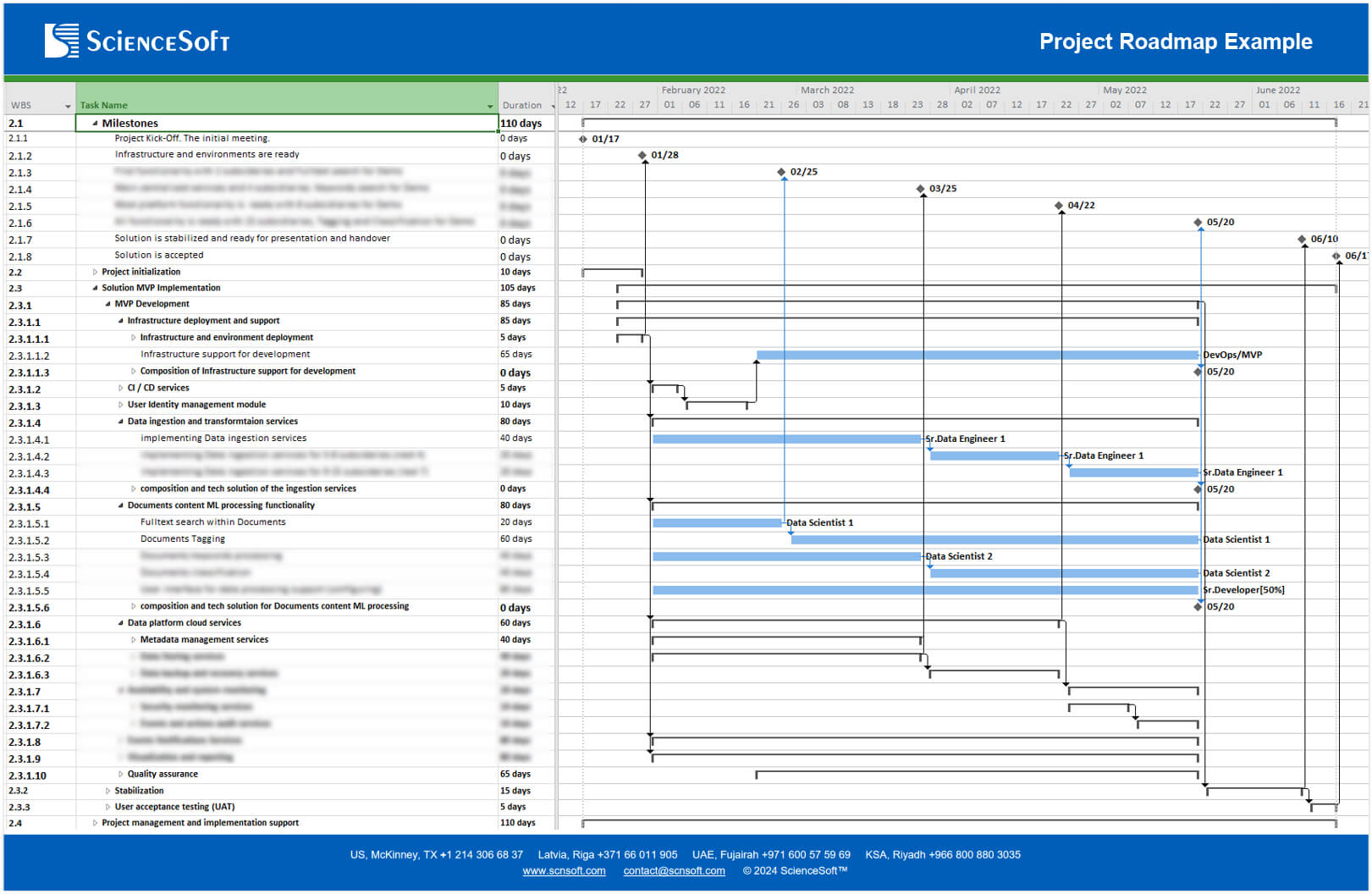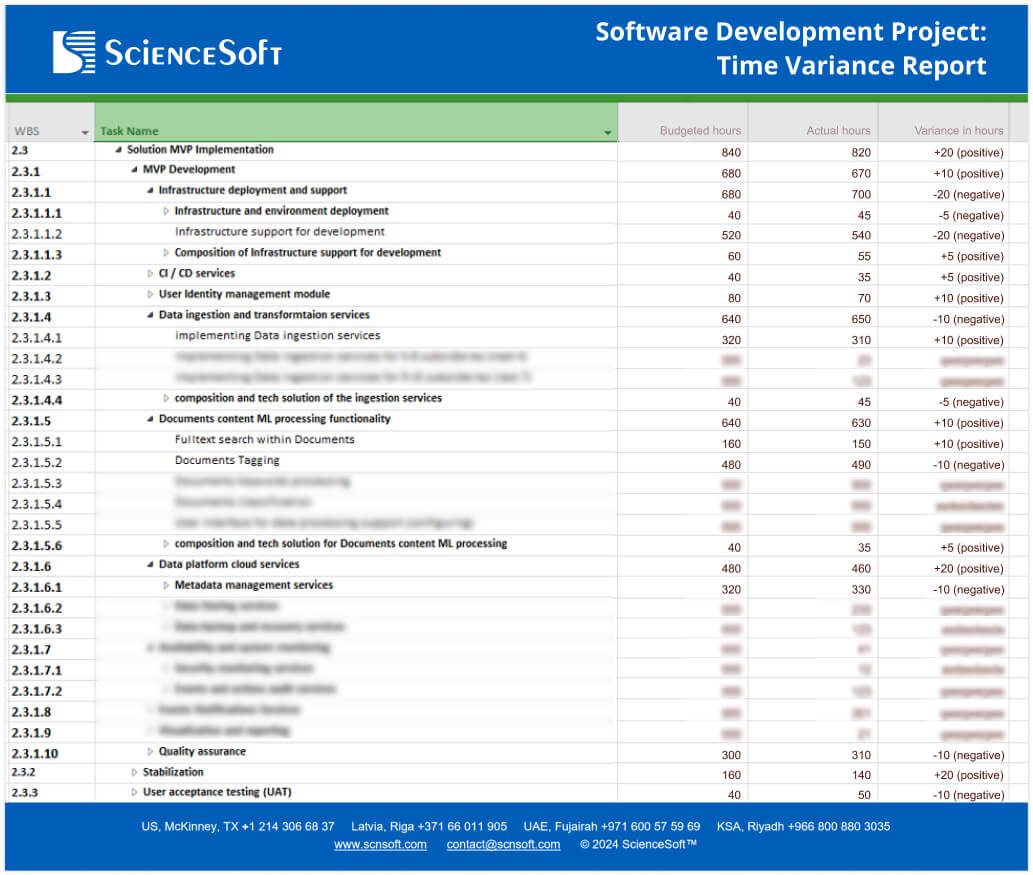How to Meet Deadlines in IT Projects without Stress and Burnout
ScienceSoft's team has described and shared key practices that help us manage the project time and respect our agreements with clients, including:
- - Correct project scoping and writing clear, detailed project documentation.
- - Work decomposition into smaller tasks, easier for assessment and more manageable.
- - Monitoring planned vs. actual time budgets.
- - Running retrospectives to investigate time overruns and improve the processes.
Red Flags to Recognize an Irresponsible Approach to Deadlines
|
|
The root cause of the problem |
How ScienceSoft's approach differs |
|---|---|---|
|
Overpromising
|
Promising unrealistically short deadlines or bargaining on deadlines and offering to do everything faster than competitors can be a vendor's dirty selling technique. |
We adhere to an ethical approach based on honesty and transparency. We never manipulate the deadlines to win a contract. |
|
No visibility into the project's progress
|
A vendor assesses the full scope of work and sets one final deadline, which makes it impossible to track adherence to the plan in the course of the project. |
We split the project into milestones, check intermediary deadlines, and adjust the pace in a timely manner. |
|
No plan B
|
If the scope changes in the course of the project or unforeseen circumstances arise, a vendor doesn't adjust the deadlines or even inform a client about the impact of changes on time agreements. |
If we see a risk of not meeting a deadline for the upcoming milestone, we openly communicate the situation to a client and discuss workarounds. If we re-estimate the deadline, we clearly explain the rationale. If meeting the previously agreed deadline is critical for a client, we take risk mitigation measures to complete a larger scope of work in less time. |
|
An overworked project team and high turnover
|
Failure to critically assess the project scope and accurately plan the milestones may lead to encouraging the team's overwork. The tactic may work as a short-term measure, but it will lead to the team's burnout if used regularly. |
We understand that overworked employees eventually work less productively, especially on long-term projects. This leads to high employee turnover and extra time needed for knowledge transfer. To avoid such problems, we accurately plan the project scope and match it with the required number of FTEs for each project role at each milestone. |
|
Flimsy excuses for missed deadlines
|
One missed deadline is not a disaster. However, if your IT partner just offers excuses and doesn't analyze the situation, it means that poor deadline management is its normal practice. |
We don't see much value in excuses. We'd rather dig into the situation's causes with the project team and tune our processes to improve and continue the project at an expected pace. |
Deadline Management in ScienceSoft's Practice
In our projects, we rely on a comprehensive project management framework to ensure the quality of delivered software and a positive cooperation experience for clients. Here is what we do regarding the deadlines throughout the project.
Approaches behind precise deadline estimation
We use various analysis techniques (e.g., interviews, workshops, on-site inspections) to study the target process(-es) from all perspectives and hear the needs and vision of all stakeholders. This allows us to estimate the implementation time more precisely and minimize the risk of future scope creep derailing the schedule.
We factor in specialists' hard and soft skills to compose a team that will work well and fast together. We are flexible enough to replace team members in case of predictable (e.g., vacation) and unpredictable (e.g., sick leave) absences without disrupting or stopping the project.
We anticipate and have a mitigation plan for internal (e.g., changes in stakeholders' requirements) and external (e.g., changes in applicable regulations) risks that can impact the project schedule. We add the time needed for risk mitigation to the overall time assessment.
Decomposing the project into tasks
We break the development process into smaller manageable tasks and subtasks and establish intermediate deadlines to facilitate progress tracking and notice immediately if the project starts deviating from the schedule.
See a sample of project decomposition into milestones and tasks

Hide
Approaches helping us meet the deadlines
We create comprehensive and detailed software and process documentation to provide straightforward guidelines for developers and minimize delays caused by requests for clarifications and reworks.
Acting proactively if the deadlines are jeopardized
We mitigate the emerging risks quickly by adjusting the project plan on the go. We can focus on delivering high-priority functionality and push features with lower priority to later stages or split the development into more parallel flows to save the deadlines.
Monitoring the adherence to deadlines
We use variance reports to compare actual and initially planned time budgets. If we get tasks with negative variance, we plan how to compensate for the time overrun.
Running retrospectives
After each development sprint, we have a retrospective session to analyze the process and team performance. If there are situations putting deadlines at risk, we slice and dice them to identify and address the root causes and prevent the reappearance of problems.
See a sample variance report

Hide



